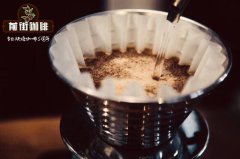Sidamo Sunshine Anasola Farm G1 feels the rich fruit aroma from the African prairie

Professional coffee knowledge exchange more coffee bean information please follow the coffee workshop (Wechat official account cafe_style)
Qianjie-Sidamo Sun Anasola Farm G1 introduction
[Sidamo Anasola Farm]
Anasora, a coffee from a single private farm in Guji, was established in 2013. the farm is located in the village of Anasora, Guji District, southeast of oromia, with an altitude of 1900-2350 meters above sea level. the excellent geographical conditions, coupled with the ideal planting environment, as well as the slow sun drying on the African scaffolding, make this coffee extremely excellent. The total area of the farm is 250ha, and the current production area is 150ha. The yield will increase by another 100 hectares in 2018.
There is a river called Turo on the farm, where they set up washing stations, so Anasora also has washing batches, and most of the people near the farm are Oromo people who speak the Euro language. About 45% of people in Ethiopia say oromifa. Anasora Farm always helps farmers around here to help them grow coffee. There is also a yerba buleye middle school in the area. Anasora is working to build a second secondary school to help educate farmers' children. Anasora Farm also subsidizes nearby orphanages to provide a higher level of education village. AnaSora Farm hopes to give back to the local community so that they can have a better life.
English product name Ethiopia Sidamo Guji AnaSora Natural G1
Country: Ethiopia
Producing area: Sidamoguji
Rating: Grade 1
Producer: AnaSora Farm
Treatment: sun treatment
Variety: local traditional variety (Heirloom)
Altitude: 1900 to 2350 m
Flavor: tropical fruits, berries, lemons, fermented wine, citrus
Knowledge: Arabica coffee is generally thought to be originated from the Ethiopian plateau, widely distributed in the tropics, after repeated mutation and breeding, derived many varieties.
In short: Qianjie is a coffee research hall, happy to share the knowledge about coffee with you, we share unreservedly just to make more friends fall in love with coffee, and there will be three low-discount coffee activities every month. The reason is that Qianjie wants to make more friends drink the best coffee at the lowest price, which has been Qianjie's tenet for 6 years!
END
Important Notice :
前街咖啡 FrontStreet Coffee has moved to new addredd:
FrontStreet Coffee Address: 315,Donghua East Road,GuangZhou
Tel:020 38364473
- Prev

What are the characteristics of Sidamo coffee? is Sidamo from the African prairie sour?
Professional coffee knowledge exchange more coffee bean information please follow the coffee workshop (Wechat official account cafe_style) front street-Sidamo Coffee introduces Ethiopia is the birthplace of the famous Arabica coffee beans, people still maintain the tradition of collecting wild coffee beans. The coffee garden at an altitude of more than 1500 meters has formed a unique coffee after more than a thousand years of evolution and adaptation.
- Next

What is the flavor of hand washing in the sun? read this article on the skills of hand flushing in Sidamo.
For more information on coffee beans, please follow the front street of Coffee Workshop (Wechat official account cafe_style)-Sidamo Sakuran brews and shares GUJI, the largest coffee producing area in Ethiopia. Sakuran comes from Hambella, one of the sub-regions of Gucci, which is processed by Buku Abel Manor. The treatment method is very sunny.
Related
- Beginners will see the "Coffee pull flower" guide!
- What is the difference between ice blog purified milk and ordinary milk coffee?
- Why is the Philippines the largest producer of crops in Liberia?
- For coffee extraction, should the fine powder be retained?
- How does extracted espresso fill pressed powder? How much strength does it take to press the powder?
- How to make jasmine cold extract coffee? Is the jasmine + latte good?
- Will this little toy really make the coffee taste better? How does Lily Drip affect coffee extraction?
- Will the action of slapping the filter cup also affect coffee extraction?
- What's the difference between powder-to-water ratio and powder-to-liquid ratio?
- What is the Ethiopian local species? What does it have to do with Heirloom native species?

